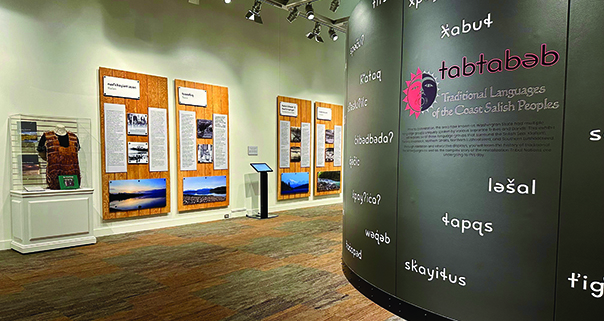
By Kalvin Valdillez, Tulalip News
With the sudden drop in temperature, many are looking for some fun indoor activities that they can enjoy with their friends and families as we approach winter. You are definitely going to want to add the Hibulb Cultural Center (HCC) to your list of places to visit soon.
We understand that with its beautiful carvings of canoes and welcome poles, it’s informative main gallery that shares the rich history of the Tulalip people, the moving tribute to the tribe’s service men and women, the traditional cedar longhouse experience, and the impressive gift shop, the award-winning cultural center may already be on that list. If this is the case for you, we suggest circling it, hitting it with a double underline and exclamation point, or simply moving it higher on the list because you are not going to want to miss their new exhibit.
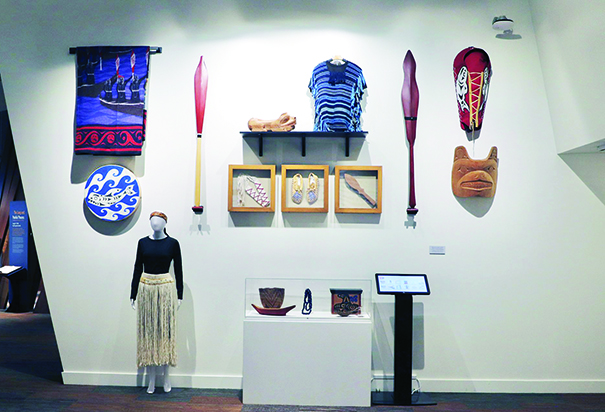
Over the years, the HCC has built a reputation for putting together unique, informative, and interactive exhibits such as The Power of Words, Interwoven History: Coast Salish Wool, Tulalip Indian Fair, Vibrant Beauty: Colors of our Collection, Roots of Wisdom, and Coast Salish Canoes. The new exhibit, tabtabəb, follows their signature formula of culture and knowledge sharing and is guaranteed to engage everyone from youth to elders. tabtabəb is sure to have folks talking for days, not only in the traditional languages but also about the exquisite curation of the new exhibit.
“The goal of the exhibit is to make the language accessible,” explained Mytyl Hernandez, HCC Museum Manger. “We use the language as much as we can, in all the videos, displays and visually too, so people can see it. And even with the name tabtabəb, which the Lushootseed department helped us find. We wanted a word that anybody could look at and give it a go at saying it. Because our languages have so many different characters, more than any other language that we speak, we wanted to make sure people could look at it and get a good sense of how to say it.”
Upon stepping into the featured gallery, your eyes are immediately drawn to a circular wall that is covered in Salishan words and phrases. All around the exhibit you will see words with various diacritics, letters, and symbols that are specific to the languages of the original caretakers of this region. Very early in the tabtabəb journey, museum guests are informed that there are 23 total languages across all of the Coast Salish tribes. This exhibit focuses on six of those dialects – Klallam, Twana, Nooksack, Northern Straits, Northern Lushootseed, and Southern Lushootseed.
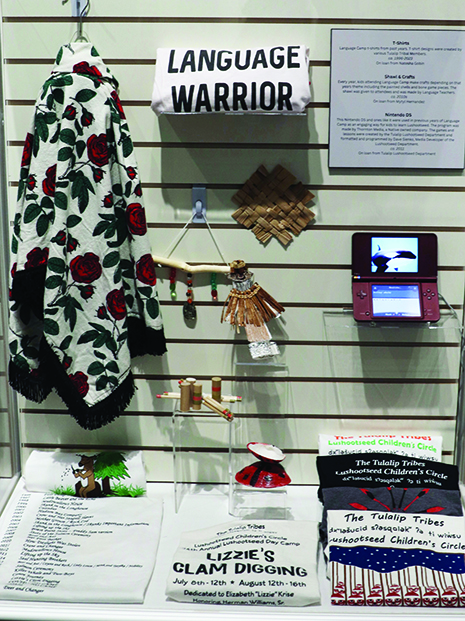
The idea behind tabtabəb was originally concepted this past July by Mytyl and her team at HCC. After contacting several other tribes, the cultural center quickly gathered information, resources, and artifacts that highlight the languages of each tribe. The result is a collaborative educational and entertaining effort that showcases the words, stories, and the history of those local languages that were once outlawed and almost lost during this country’s era of assimilation.
Said Mytyl, “We are featuring six Coast Salish language groups; because we all really spoke different languages and the most common was Northern and Southern Lushootseed. We were able to form really nice relationships with S’Klallam Jamestown, Nooksack, Upper Skagit, and Puyallup. We worked with all of the tribes, sharing information, letting them know what we wanted to display and how we wanted to display it. We requested pictures and information. We wanted to make sure that their information was portrayed in the most respectful and accurate way possible.”

In addition to the intertribal partnerships, HCC also worked closely with the Tulalip Lushootseed department and the tribe’s TDS crew. When making your way through the exhibit, you will notice that there are a number of digital kiosks in between each section of tabtabəb. These interactive screens include numerous games and stories. They also provide the proper pronunciation of several of the items that are on display including the words for skirts, baskets, beads, canoes, and blankets.
The exhibit pays homage to the Tulalip Lushootseed department as well and features a dedicated display case that highlights all the work they have done throughout the years. In this case you will find t-shirts from past summertime Lushootseed Camps, and the various tools they utilize to teach kids about the ancestral language such as shawls, slahal game pieces, and a Nintendo DS filled with games and lessons geared toward the children.
At the center of the circular wall, a video of Lushootseed Language Warrior Lois Landgrebe is on a loop where she shares the traditional story, Star Child and Diaper Child. Along the opposite wall are multiple other traditional stories in print like Bear and Ant and Basket Ogress. These stories and their artwork were developed by the Lushootseed department, and they contain important lessons and explanations about the world around us.
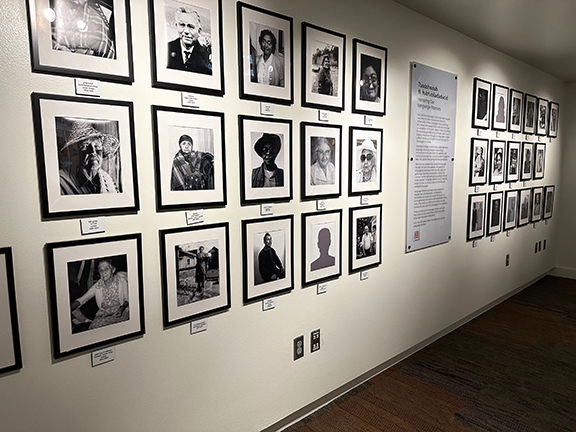
Mytyl provided an exclusive tour of tabtabəb for Tulalip News. During the walkthrough she shared, “All of the panel displays feature the languages of the tribes that are using them, and what they are doing in terms of language and cultural revitalization. In our cases, we have items on display that are specific to those tribes and those language groups. It could be anything – clothing, books, canoes, you name it. We also have an artifact wall with different items from our community; items that we’ve had in collection and that we secured specifically for this exhibit. And then with the accompanying digital displays, you can hear the word for each of the items in both English and Lushootseed.”
If you were to tour tabtabəb in a clockwise fashion, you will end the exhibit looking at a wall of black and white portraits. Each individual in the photographs played a major role in keeping the Salishan languages alive for the next generations to come. And through their life’s work, like the languages they fought to preserve and revitalize, the legacy of each of those elders who have now passed on will live long into the future.
“One of my favorite parts of the exhibit is our Warrior Wall,” expressed Mytyl. “We are displaying the pillars of language communities, some of those early elders and ancestors who worked really hard for language revitalization when others weren’t. A lot of these people are responsible for the dictionaries of their languages, and books, and keeping traditional stories and storytelling going.”
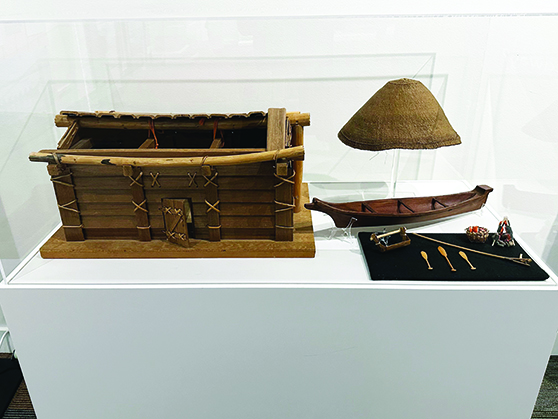
The tabtabəb exhibit is on display for the foreseeable future and it’s a wonderful way to expand your knowledge about the Coast Salish people and their spectacular vernacular. The Hibulb Cultural Center is open Tuesday – Friday 10:00 a.m. to 5:00 p.m., and also Saturday – Sunday from Noon to 5:00 p.m. For more information, please visit their website www.HibulbCulturalCenter.org or contact 360-716-2600.
“Representation is important,” stated Mytyl. “And representation of language, in outside communities, is not available to our people. We want to make sure that we can put as much as we can on display here and make it accessible to our own people, and also make it accessible for the people on the outside, so they can see that it is still a live language and that we’re still using it.”